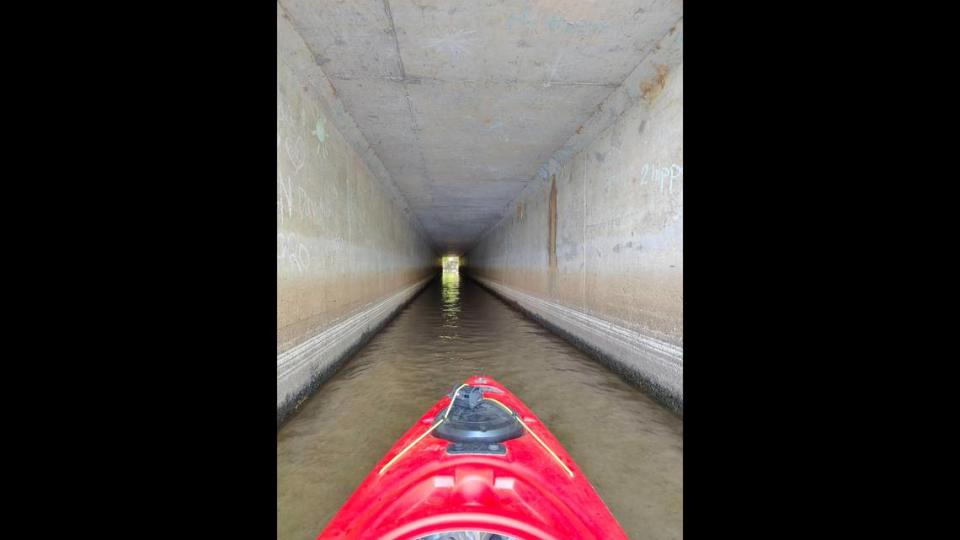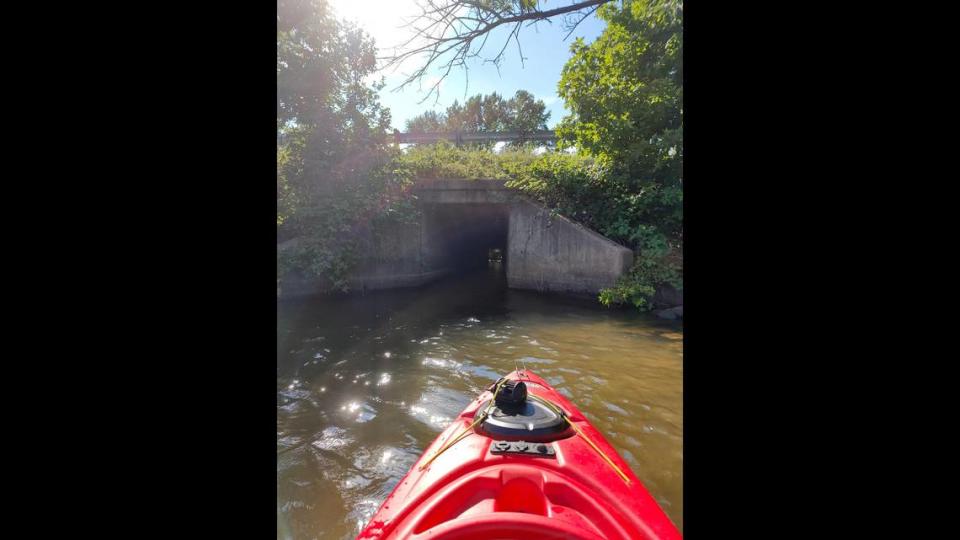Kayakers love this tiny North Carolina lake. You’ll see more wildlife than people.
Wyatt Maxey and friends at his Cornelius apartment complex love kayaking on a hidden-in-plain-sight waterway that locals call Lake Cornelius — one of North Carolina’s tiniest lakes.
On any given day, truckers on nearby Interstate 77 honk-honk friendly hellos.
Drivers in stopped traffic roll down their windows and ask, “Can I have a ride?”
Maxey instantly fell in love with the 125-acre Lake Cornelius when he moved to an apartment complex along its shores, off I-77, Exit 28.
The 27-year-old Charlotte native invited this Charlotte Observer reporter to kayak the lake after reading my Aug. 2 article about neighboring 341-acre Lake Davidson.
“Is Lake Davidson part of Lake Norman?” the headline asked. “Contrasts abound.”
The same question could be posed for Lake Cornelius, I quickly concluded after launching onto the lake, with Maxey and his friends who live there too, on a bright, 95-degree Sunday earlier in August. A slight breeze cooled us.
First, I was astounded to meet someone in their 20s who considers this nationally award-winning hometown newspaper an essential daily read. We hire only the best, I said.
Second, he’s a native Charlottean, just like my brother Jimmy, who was born at the old Mercy Hospital way back in 1955, making my brother older than these lakes!
“You’re as rare as that bald eagle I saw above Lake Davidson,” I told Maxey.
But back to the story.
Like Lake Davidson, Lake Cornelius is separated from massive Lake Norman by Interstate 77.
Maxey has kayaked through the tunnel-like culvert that connects Lake Cornelius with boat-packed Lake Norman and then through a separate tunnel to Lake Davidson, a roughly 2-mile trip.

Duke Energy says Lake Davidson and Lake Cornelius are part of Lake Norman, which at 32,475 acres is the state’s the largest human-made lake.
Under federal license, the company manages the lakes it formed along the Catawba River last century. So Duke Energy, more than anyone, should know if the smaller lakes are sections of the larger one.

Still ...
More wildlife than humans
Lake Norman seemed a world apart when I kayaked the calm waters of Lake Davidson and Lake Cornelius this month.
I saw more wildlife than humans on each of the smaller lakes and only a couple of motor boats.
And that’s what Maxey and friends admire about their little lake, too.
“I love the quietness,” Macey Hess, a 24-year-old registered nurse at Lake Norman Regional Medical Center in Mooresville, told me on Lake Cornelius that Sunday. “It’s calm. I just like to be with our little group here.”
Lake Cornelius has no public boat launch, only a town of Davidson kayak launch located on the Davidson part of the lake, Maxey said. The lake is about half in Cornelius and half in Davidson, he said.
Hess’ boyfriend, 23-year-old Jonathan Nagle, highlighted the wildlife on Lake Cornelius.
“Anything from deer on the (unpaved) trail” that rings Lake Cornelius for 1 1/2 miles, “to owls, to osprey diving down into the water picking up fish,” said Nagle, who works for custom home builder CBUSA.
Plus turtles and herons, he said.
Nagle and Hess moved from her hometown of Harrisonburg, Virginia,— exactly a four-hour drive from Lake Norman — after Nagle visited here on a job assignment.
“There’s a lot of great wildlife out here,” Nagle said after the group hooked their kayaks to a floating dock they installed on the lake. “And a lot of fish, for humans and for birds.”
“The herons will stand on the shore as stealthy as can be until they see something in the water” to lunge for and devour, said Patrick Rallings, a 29-year-old software engineer at Ally Financial in uptown Charlotte.
Rallings joined us with his girlfriend, Emily Naviganuparp.
And a beaver has flapped its tail swimming past their dock to its home in another part of Lake Cornelius.
The animal inspired the name of their dock: “Beaver Island,” Maxey said.
“We like to sit out here on the lake, drink beer and watch people stuck in traffic,” Rallings quipped at the dock.
Said Nagle: “I’m glad that we’re cut off by 77, because we couldn’t do this right here if there were boats. And everyone could just come over here (from Lake Norman). It would just be part of the bigger lake.”
Maxey said he’s also enjoyed learning the history of his lake, including through chats with longtime homeowners.
Two bridges and a couple of road beds lie at the bottom of Lake Cornelius, his research revealed.
Is Lake Cornelius really Lake Norman?
The kayakers met for the first time while standing outside their complex after an apartment fire in May.
They all kayaked, they discovered.
And Rallings and Maxey learned they worked for the same company. Maxey is a data engineer at Ally Financial.
Maxey graduated from Providence High School in 2014 and North Carolina State University in 2018. He ran cross country for N.C. State.
Like most who live in the Lake Norman area, he wondered when he moved here whether Lake Cornelius was its own lake or part of Lake Norman.
Lake Cornelius sure seemed different than Lake Norman, he said. And it connected with Lake Norman only through the culvert beneath I-77.
“How do you get a boat from side to side? Because I just assumed (this section) was an arm of Lake Norman,” Maxey said. “But you notice there’s no bridge to drive over it. I just never quite understood.”
“Before 77, it was Lake Norman. But now?” he said.
Water in the culvert flows from Lake Cornelius to Lake Norman, not vice-versa, he observed.
Still, his apartment complex, while on Lake Cornelius, is named Bexley Lake Norman.
“Live Life by the Lake,” Bexley Lake Norman touts on its website. “Luxury Apartments on Lake Norman in Cornelius NC.”
So Maxey was curious what I thought: Is Lake Cornelius really Lake Norman, or not?
I’ve wondered the same thing since moving to the Lake Norman area in 1989 — actually, well to the west for my first seven years here in Lincolnton.
I figured a quick Google search would settle the issue before this month’s expedition, but no.
Only one of the first nine sites that surfaced when I plugged “Lake Cornelius” into my search acknowledged its existence.
And that was in a headline of part of a Duke Energy federal re-licensing document.
The other sites ignored Lake Cornelius, mentioning Lake Norman instead.
In the eye of the beholder
As we kayaked silent Lake Cornelius and then relaxed on Beaver Island, I blurted out my opinion on whether the lake was Lake Norman.
By then, I had temporarily blinded myself when I scratched an itch on an eyelid and inadvertently smeared sunscreen lotion onto my eyes. It stung big-time for several hours, but I tried to remain coherent.
“I think it’s its own lake, but I think it’s whatever you want it to be,” I told the gang, prompting chuckles. “That’s what I concluded with Lake Davidson, but even more so with this.”
I was about to elaborate when I spotted something rare on Lake Cornelius despite my burning eyes.
“Look,” I said. “A boat!”

